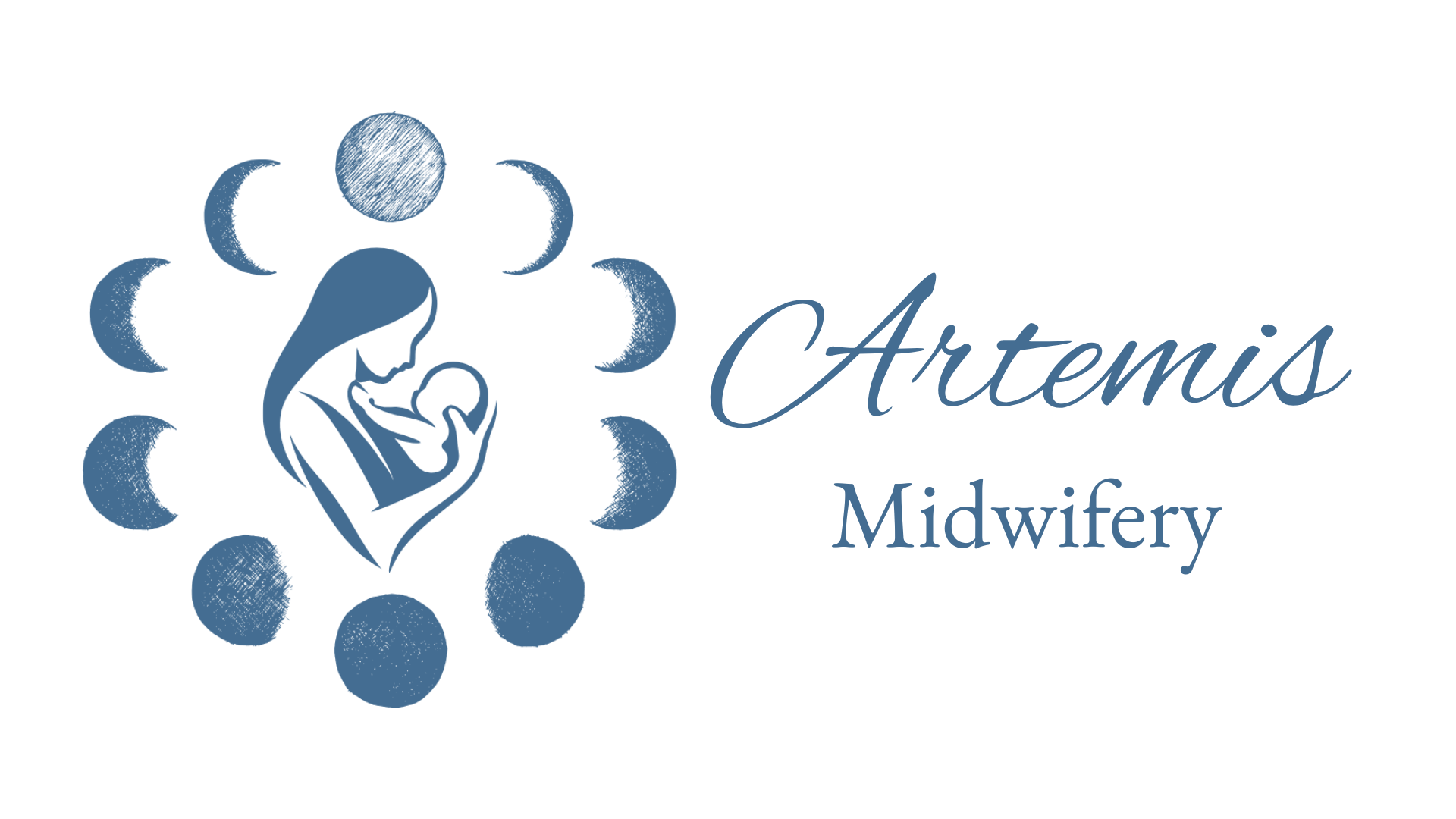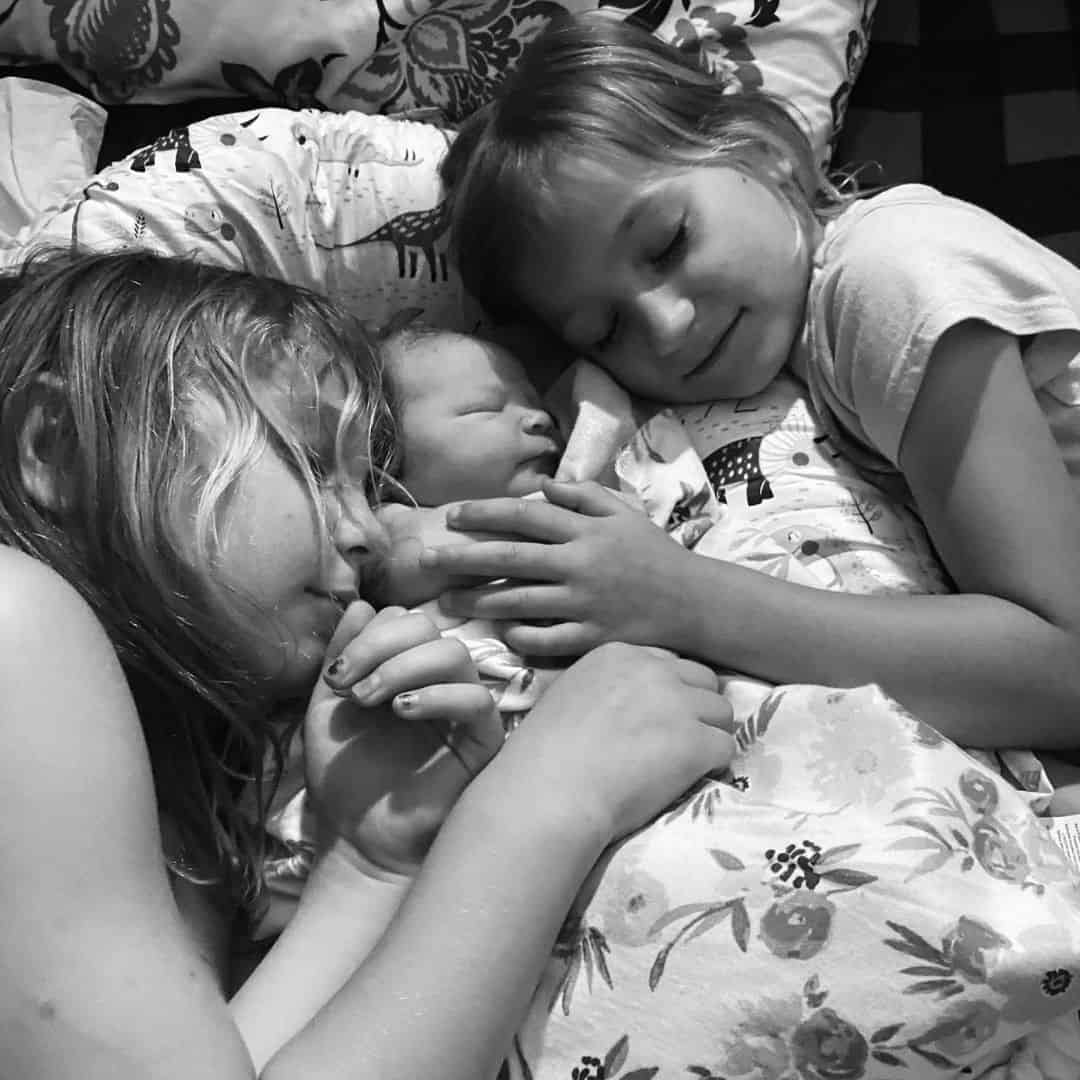Bonding with your baby: A midwife’s guide through intuitive pregnancy and gentle birth
Many parents wonder about bonding with their baby. Will it come naturally? Easily? How to support healthy bonding?
At the time of birth, newborns are completely empathetic creatures. Up to this point in their lives, they’ve shared the body and all the emotional experiences of their mother. The separation of bodies is not quickly processed. In the first days and weeks of a newborn’s life they continue to mirror the parent. The physical and emotional well-being of the MotherBaby dyad is closely intertwined. The emotional and mental health of MotherBaby and even the child’s cognitive development depends on a strong primary attachment.
Attachment is the term that describes the feeling of connectedness between parent and infant that promotes safety, security, and holistic well-being. This attachment can be influenced by environmental, emotional, and physical factors. The birth of a baby means the birth of a new family and a new relational dynamic among family members. The new family needs to find itself as a complete organism which is growing and changing physically, spiritually, and emotionally.
what is “attachment theory”?
Attachment Theory is based on the pioneering work of John Bowlby who defined attachment as “lasting psychological connectedness between human beings” (Cherry, 2022). The earliest bonds formed by children with their caregivers can have a tremendous impact that continues through life. Children who are securely attached as infants develop self-esteem and better self-reliance which follows them through adulthood and in their future relationships. The foundation for a strong attachment is laid from the very first flutters of life and can be influenced by the events surrounding the child’s birth and immediate postpartum.
what is intuitive pregnancy?
The forming of the MotherBaby bond begins prenatally as baby grows and moves in the womb. A strong prenatal attachment leads to easier transition to motherhood and lays the foundation for strong postnatal attachment. As mothers begin to begin to conceptualize their future child, they communicate with their babies, build their intuition and can be more responsive to their infants and sensitive to their needs after birth. Mothers who build a strong prenatal attachment to their babies develop a stronger sense of competence, confidence, and satisfaction in being a mother.
Between 18- and 24-weeks’ gestation, your baby’s ears are rapidly developing. The unborn baby learns the sounds of mother’s breathing, heartbeat, and voice. Unborn babies can also hear the voices and sounds of other family members.
Your baby’s sense of touch begins to develop at 7 weeks’ gestation. By the time you feel those first bumps and flutters of movement, your baby is already responding to their environment. As your baby grows you may notice they start to push back against touches on the outside of the belly or move with music or other stimuli.
When a mother is happy, sad, stressed, or fearful her body and baby are flooded with hormones including oxytocin and cortisol. Your baby feels what you are feeling and is learning about the human experience even while in the womb. You can help your baby to integrate by talking to them after a stressful experience and telling them that everything is okay. Talking to your baby helps to downregulate your own nervous system, flooding your body and your baby with oxytocin and a sense of well-being.
Wait – so what is oxytocin?
Oxytocin is associated with bonding and attachment because of its role in regulating the autonomic nervous system. Oxytocin is the “love hormone” that causes uterine contractions in childbirth, sexual orgasm, and is associated with emotional connection and bonding. Oxytocin encourages social sensitivity, and empathy, and modulates the stress response by countering stress hormones including cortisol.
healthy bonding and attachment through an empowered birth experience
There is growing recognition of how the mother’s experience in childbirth impacts their ability to bond with their babies. Mothers who are anxious, or traumatized by birth events have lower oxytocin levels and higher levels of stress hormone. Low levels of oxytocin can interfere with bonding between mother and child while increased cortisol keeps mother in a hypervigilant “fight or flight” state. The emotional impact spreads like ripples as oxytocin “interdependency” spreads outward, affecting the entire family.
A tenet of midwifery care includes taking a holistic approach to bonding by caring for the physical, social, and emotional health of the entire family pod.
Midwives work to build a trusting relationship with the mother and family, and to provide individualized client education that results in a confident, empowered labor and birth. This approach reduces the incidence and mitigates the emotional impact of birth injury, trauma, and cesarean section.
Mothers with high oxytocin levels were found in studies to be highly sensitive, and able to build strong connections with their babies (Scatliffe, 2019). The expression of oxytocin in bonding behaviors is self-reinforcing for all parties in the circle, including the infant and the co-parent, as well as other children and family members. As mother connects with her newborn and the newborn unfolds to their mother, oxytocin regulates both the behavior and the response creating a “cuddly bubble” of self-reinforcing connection and attachment.
bonding through a family-centered birth experience
Midwifery model care and home birth creates space for a family-centered birth experience where loved ones can welcome the newborn and build strong attachment from the first moments.
• Often co-parents or family members or mother herself like to be involved with receiving the baby. Your midwife can assist with “catching” your baby if this is your desire.
• Siblings can provide drinks or snacks for the mother. Most children do well at births if they are well prepared and have a dedicated support person.
• Partners, siblings, or other family members can help with cutting the cord. Ask your midwife about assisting family members with cord cutting.
• The newborn exam can be completed with the participation of the family so that everyone can make discoveries about this new little person together.
Midwifery wisdom: Honoring the “Golden Hour” after birth
At the birth of the newborn, the environment is kept peaceful and focused on family discovery, skin to skin contact, and the initiation of breastfeeding.
In the first hour after birth, the mother and babies’ bodies are flooded with oxytocin, the “Love hormone”, and the two are primed for connection. As mother snuggles their baby and the two feel, smell, hear, taste, and see each other, powerful imprinting is taking place. This is the beginning of attachment.
This Golden Hour can be protected by:
• Immediately placing the newborn skin-to-skin on mother’s chest after birth
• Maintaining continuous skin-to-skin contact between the baby and their mother
• Keep lights, noises, and stimuli low so as not to cause stress to the baby and to create a peaceful environment for connection
• Wrap MotherBaby in blankets and keep them warm together to encourage the flow of oxytocin
• In normal circumstances, routine newborn assessments and procedures can take place while the newborn remains in their mother’s arms
• All non-immediate newborn assessments and procedures can wait until after the first hour has passed
Skin to skin contact: Where love helps physiology
Continuous skin-to-skin contact between baby and mother, partner, and other family members can help the baby to integrate emotionally with their new surroundings, build a sense of belonging in the family, and also encourage the physiologic transition to life outside the womb.
• The heartbeat, respirations, and body temperature of the mother help to cue the newborn circulatory system to transition so they can regulate their own heart rate, breathing, and respiration.
• The voices, scents, touch, and body rhythms of the parents are familiar and comforting for the baby and help with nervous system integration.
• Skin-to skin-contact with the mother helps to encourage milk production and infant feeding behaviors.
• Touch stimulates growth hormones in the baby so they can thrive.
What if the birth plan changes?
While gentle birth is the goal, occasionally circumstances require a change in the birth plan. Sometimes medical needs mean an interruption in that “Golden Hour” after birth and separation becomes necessary.
The childbirth experience can have a definitive role in how a mother sees herself and her baby, and the topic of birth trauma and healing extends beyond the scope of this article.
What is important to know is even when the birth plan goes awry and early separation between mother and baby is needed, all is not lost. Studies show that the establishment of a strong prenatal attachment will help build resilience and ease the process of postpartum bonding even when there is an interruption due to a change in plans or traumatic birth (Smorti, et al., 2020).
Bonding activities can resume as soon as you and your baby are reunited. Recognizing and talking about the shared birth experience with your baby can help counter the effects of stress hormone and encourage oxytocin production. This can help facilitate integration of the experience with restoration of MotherBaby connection.
facilitating healthy attachment through babyhood and beyond
Attachment Parenting is a philosophy that focuses on building a healthy attachment between parents and their babies and children. Proponents of attachment parenting make the case that a secure, trusting attachment to parents during childhood forms the basis for secure relationships and interdependence as adults. This philosophy of attachment influences all parent-child interactions and can include approaches to infant feeding, babywearing, nighttime parenting, empathetic communication, and discipline.
Attachment parenting was popularized in the early 2000’s by pediatrician William Sears, MD and numerous books written by William and Martha Sears continue to be valuable guides for anyone wishing to explore attachment parenting.
To learn more about attachment parenting consider the following resources:
The Attachment Parenting Book: A commonsense guide to understanding and nurturing your baby by William and Martha Sears
Modern Attachment Parenting: The comprehensive guide to raising a secure child by Jamie Grumet
Raising a Secure Child by Kent Hoffman, Glen Cooper, and Bert Powell
Siblings without Rivalry, by Adele Faber and Elaine Mazlish
Attachment Parenting International
REFERENCES
Cherry, K. (2022). What is attachment theory: The importance of early emotional tools. Verywell Mind. Retrieved from: https://www.verywellmind/cpom/what-is-attachment-theory-2795337
Scatcliffe N., Casavant, S., Vittner, D., & Xiaomei, C. (2019). Oxytocin and early parent-infant interactions: A systematic review. International Journal of Nursing Sciences. (6)4. 445 – 453. DOI: 10.1016/j.jnss.2019.09.00
Cynthia M. Bean
HOMEBIRTH MIDWIFE
Cynthia (she/her) is a mother, midwife, herbalist, fitness enthusiast, philosopher, seeker, and adventurer. Cynthia has held space for hundreds of families who have found their power and creativity through their birth journey. Cynthia currently owns a home birth midwifery practice near Uxbridge, MA, and in her free time enjoys cycling, hiking, gardening, and traveling to visit her three adult children.

 Let's Chat
Let's Chat
